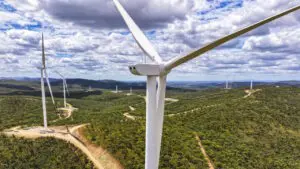The federal government’s Covid recovery focus on expanding Australia’s gas-fired generation capacity has been brought into question – again – this time by academic research that suggests renewable alternatives are on track to slash industrial gas use by up to 80 per cent.
The bleak outlook for future gas power demand comes from the University of South Australia’s Future Industry Institute, where a team has been working on technologies and energy strategies to deliver renewable alternatives for industrial gas applications.
And the team’s efforts, backed by ARENA and the new Reliable Affordable Clean Energy for 2030 Cooperative Research Centre (RACE for 2030 CRC), are starting to show distinct promise.
In particular, FII researchers are currently prototyping a commercial-scale system that stores renewable electricity as heat and releases that heat on demand for industrial applications.
And FII researcher, Dr Rhys Jacob, believes this and many other innovations in the area will be commercially viable sooner rather than later.
“There is a lot of work being done, around the world, towards the electrification of heat,” Jacob said in a statement on Thursday.
“This research is looking at how we use low-cost variable renewables to offset what is traditionally fossil fuel-fired heat, and the recent progress has been excellent.”
The Uni SA thermal storage system, which is set to begin testing in early 2021, will initially be designed to deliver heat ranging in temperature from 200-700°C, with scope to increase that output to above 1000°C in the future.
The team says the industrial heat-to-power units will be self-contained and stackable, with each unit delivering 850-1000kWh of thermal storage capacity.
Jacob says the self-contained 10-foot long units could be rolled out as modules, in a similar fashion as big batteries, depending on how much storage you need.
“We have already successfully tested a smaller version of the technology last year, so we are confident it works, and we’re now in the process of upscaling it and refining features so it delivers a ready-to-go solution for industry.
“Our research shows that, used in conjunction with renewables such as solar and wind, this system could reduce gas consumption by as much as 80 per cent in some industries.”
That said, the solution does not rule out gas, or other renewable alternatives to gas, entirely. As Alan Pears wrote here earlier this week, the gas debate in Australia need not be about ‘all or nothing’.
“You will still need to have the option of fuel as a backup for when renewable output is low, because from the data we have run, if you want to use purely renewables and storage, you would require a huge amount of storage just to cover the extreme situations,” Jacob said.
“So, we’ve developed a hybrid approach, where our system can deliver 60, 70, and 80 per cent of heat needs using renewables and storage, then the small shortfall will be covered by a fuel, which could be an existing gas system, or renewable fuels like hydrogen or biogas.”
Meanwhile, FII research also suggests other hybrid industrial systems combining base-line renewables with a fuel backup are economically viable and environmentally sustainable across a range of applications.
“For instance, we just released a paper looking at wastewater plants, many of which currently harvest biogas created through the treatment process, and then burn that gas as fuel for their onsite operations,” Jacob said.
“Our study shows that if they used renewables to power operations as much as possible, and sold the harvested biogas back into the wider system, only using the small amount they need for backup, there would be significant economic and environmental gains over the traditional biogas-only system.
“We’ve had conversations with a number of interested parties about how we can use our technology to provide process heat, and the advantage of these hybrid approaches, from industry’s point of view, is that they leverage existing fossil fuel infrastructure but make the overall system more cost effective and energy efficient,” he added.
“So, a small amount of high value fuel can be used on demand when required, but abundant, cheap and clean energy can do the grunt work.”










